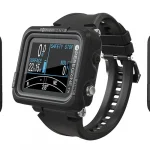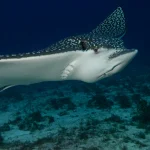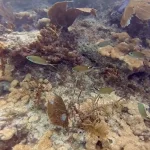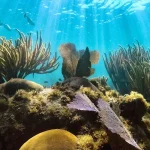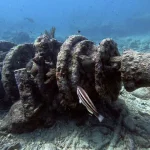Table of Contents
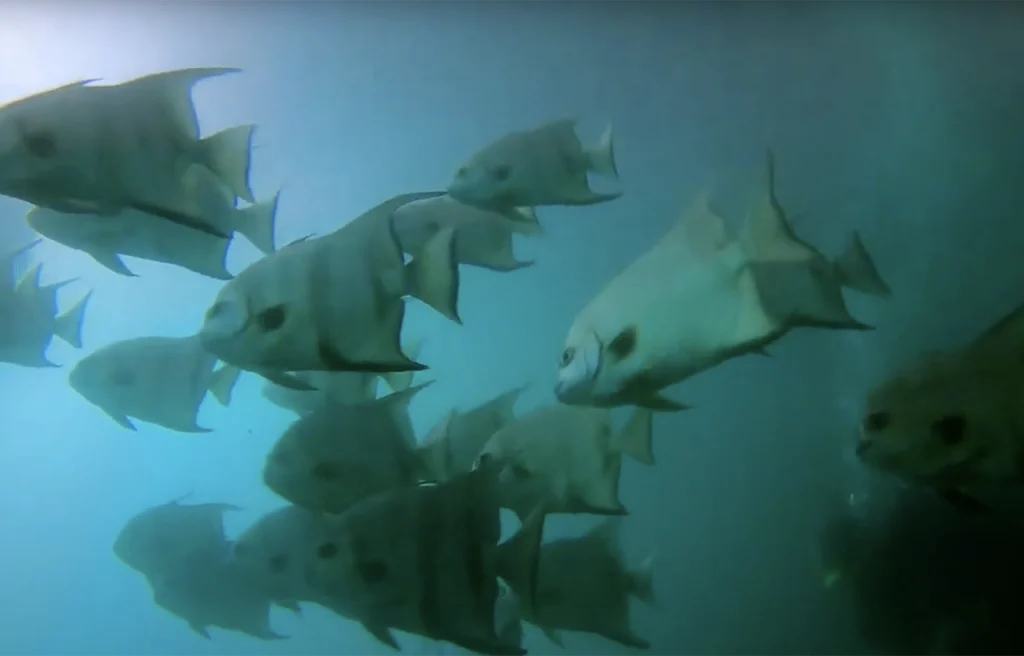
Blue Heron Bridge, located in Riviera Beach, Florida, is renowned for its exceptional diving and snorkeling opportunities, making it a popular destination for both locals and tourists.
Article at a Glance
- Location: Situated in Riviera Beach, Florida, accessible via Phil Foster Park.
- Depth: Shallow dive site with depths ranging from 5 to 25 feet, making it suitable for divers of all skill levels.
- Best Diving Conditions: Optimal visibility and minimal currents occur 30-60 minutes before and after high slack tide.
- Marine Life Diversity: Home to a rich variety of species, including seahorses, octopuses, nudibranchs, and schools of tropical fish.
- Accessibility: Easy shore entry allows for convenient access to the water, ideal for both beginners and advanced divers.
- Photography Hotspot: Offers excellent opportunities for underwater photography, particularly for macro shots of unique marine life.
- Conservation Efforts: Designated protected area to preserve marine biodiversity, with regulations against the collection of marine life.
Blue Heron Bridge Palm Beach
Location and Accessibility
- Blue Heron Bridge is part of Blue Heron Boulevard, connecting Riviera Beach with Singer Island. The entrance to the bridge is accessible via Phil Foster Park, which features a parking lot, boat ramp, and beach area (2).
Park Features
- Phil Foster Park spans 14.7 acres and includes amenities such as picnic tables, restrooms, and barbecue grills. It is wheelchair accessible and offers a playground for children (1).
Diving and Snorkeling
Diving Experience
- Recognized as one of the world’s premier dive sites, Blue Heron Bridge was voted the “Best Dive Site in the World” by Sport Diver Magazine in 2013. The site offers a diverse ecosystem with depths ranging from 10 to 54 feet.
- Divers can encounter a variety of marine life including seahorses, octopuses, batfish, and numerous species of nudibranchs. The underwater visibility can reach up to 50 feet during optimal conditions, particularly around slack high tide.
Snorkeling Trail
- A snorkeling trail was established in 2012, providing an accessible option for non-divers to explore the vibrant underwater environment. The trail features various artificial structures that attract marine life.
Conservation Efforts
In response to concerns from the diving community, the Florida Fish & Wildlife Conservation Commission designated the area around Blue Heron Bridge as a protected zone in 2019. This ruling prohibits the collection of marine life, ensuring the preservation of its rich biodiversity.
Safety and Regulations
- Divers and snorkelers are advised to use dive flags for safety due to boat traffic in the area. Fishing is allowed from designated areas, but spearfishing is prohibited to protect marine life.
- Visitors should be aware of parking regulations to avoid fines, especially during busy weekends when spaces fill quickly.
What Marine Life Can I Expect To See?
- Seahorses: Various species, including the longsnout seahorse, are frequently spotted among the underwater structures.
- Octopus: The Atlantic long-arm octopus, also known as the mimic octopus, is commonly found in this area.
- Batfish: Several types of batfish, including polka-dot and roughback species, inhabit the region.
- Pipefish: These slender relatives of seahorses can often be seen camouflaged among vegetation.
Notable Species
- Angelfish: Large gray, French, and queen angelfish are prevalent under the bridge.
- Stingrays: Southern stingrays are often spotted gliding along the sandy bottom.
- Moray Eels: Both green and spotted moray eels can be found hiding in crevices.
- Nudibranchs: Over 100 species of nudibranchs have been documented here, making it a hotspot for macro photographers.
Unique Observations
- Frogfish and Stargazers: These unusual fish are known for their camouflage and can often be seen lying motionless on the seafloor.
- Schools of Fish: Expect to see schools of spadefish, barracuda, and grunts swimming around the pilings and structures.
- Rare Sightings: Manatees occasionally visit the area, especially during colder months. Other rare sightings include tiger mantis shrimp and decorator crabs.
Habitat Features
The underwater environment includes:
- Artificial Reefs: Structures such as sunken boats and reef modules attract diverse marine life.
- Bridge Pilings: Covered in colorful sponges and corals, these provide habitat for various small crustaceans like arrow crabs and banded coral shrimp.
What Do Divers Say About This Site?
Diving Experience
- Beginner-Friendly: Considered perfect for novice divers due to shallow depths (5-20 feet) and easy shore entry
- Incredible Marine Life: Divers report seeing an extraordinary variety of marine creatures including (3):
- Octopuses (Atlantic long-arm octopus)
- Seahorses
- Barracudas
- Stingrays
- Tropical fish schools
- Eels
- Nudibranchs
Critical Diving Tips
- Timing is Crucial:
- Dive during slack high tide (30-60 minutes before and after high tide)
- Avoid strong currents by carefully checking tide charts
- Best visibility occurs during this narrow window
Practical Advice
- Arrive Early: Parking fills up quickly, especially on weekends
- Bring a Dive Flag: Essential for safety due to boat traffic
- Consider a Guide: Local dive guides can help locate hidden marine life
- Equipment: Relatively shallow dive means one tank can last 80-90 minutes
Key Information
| Category | Details |
|---|---|
| Location | Riviera Beach, Florida |
| Depth Range | 5 to 25 feet (average 10-20 feet) |
| Best Time to Dive | 30-60 minutes before and after high slack tide |
| Visibility | Ranges from 1 to 60 feet, best during slack tide |
| Marine Life | Seahorses, octopuses, batfish, nudibranchs, and more |
| Entry Type | Shore entry from Phil Foster Park |
| Parking | Available at Phil Foster Park (arrive early on weekends) |
| Suitable For | Beginners and advanced divers |
| Unique Features | Snorkel trail, bridge pilings, artificial reefs |
| Safety Considerations | Use a dive flag; avoid boat traffic |
| Photography Opportunities | Excellent for macro photography and unique marine life |
| Night Diving | Permitted with a night dive pass |
Highlights of Diving This Site?
Unique Marine Ecosystem
- Voted “Best Dive Site in the World” by Sport Diver Magazine in 2013
- Described as “Florida’s exotic critter capital” by renowned marine authors Paul Humann and Ned Deloach
- Offers an incredible biodiversity with potential to see over 100 species in a single dive
Marine Life Diversity
Divers can expect to encounter:
- Seahorses in various sizes and colors
- Multiple octopus species, including the mimic octopus
- Rare marine creatures like:
- Batfish
- Frogfish
- Stargazers
- Over 100 nudibranch species
- Potential manatee sightings
- Schools of barracuda and spadefish
Diving Conditions
- Depth: Shallow dive, averaging 15-20 feet
- Best Time: 30 minutes before high tide
- Duration: 45 minutes to 2 hours per dive
- Accessibility: Free shore diving
- Visibility: Can change dramatically with tidal flows, from near-zero to tens of meters in minutes
My Favorite Dive Computers
I have compared the 3 top diving computers for each category to help making the right choice easier:
Iconic Spots At This Site
1. Phil Foster Park Snorkel Trail
- Description: An 800-foot-long artificial reef created in 2012 using over 600 tons of Anastasia rock boulders, this trail is designed specifically for snorkelers and divers.
- Marine Life: Attracts a diverse array of juvenile tropical fish, octopuses, seahorses, and various invertebrates. It’s a prime location for spotting nudibranchs and other unique species.
2. Bridge Pilings
- Description: The pilings of the Blue Heron Bridge provide excellent habitats for marine life. Divers often explore the areas around these structures.
- Highlights: Look for arrow crabs, lobsters, and a variety of colorful sponges and corals that thrive in this unique environment.
3. The Smaller Bridge
- Description: Located on the southeast side, this smaller bridge offers a different perspective and unique marine encounters.
- Attractions: Known for its calm waters and abundant marine life, including seahorses and various fish species.
4. Wrecks and Artifacts
- Description: Divers can find small wrecks that have settled in the area, adding an element of intrigue to dives.
- Notable Wrecks: A speedboat wreck is particularly popular among divers looking for an exciting exploration experience.
5. Hammerhead Shark Statues
- Description: Near the west end of the snorkel trail, three hammerhead shark statues have been installed as part of the underwater experience.
- Significance: These statues not only serve as a fun photo opportunity but also help divers navigate the area (4).
Diving Conditions
- Best Time to Dive: The optimal time for diving is during slack high tide, approximately 30 minutes before and after high tide when visibility can reach up to 100 feet.
- Depth Range: The dive site features shallow depths ranging from 5 to 20 feet, making it accessible for beginners and experienced divers alike.
Environmental Conservation Efforts at Blue Heron Bridge
Marine Life Protection Ruling
In 2019, the Florida Fish and Wildlife Conservation Commission (FWC) implemented a crucial regulation:
- Prohibits the collection and possession of marine life fishery species within Phil Foster Park and surrounding waters (5)(6)
- Specifically targets species collected for the tropical aquarium trade
- Maintains high-quality snorkeling and diving opportunities
- Contributes to the conservation of species under the Blue Heron Bridge
This ruling came after significant advocacy from the local diving community, who recognized the area’s ecological importance.
Community-Driven Conservation
The protection of Blue Heron Bridge was largely a grassroots effort:
- Local divers and underwater photographers raised awareness about the site’s unique biodiversity
- A petition to end the removal of marine life from Phil Foster Park gained substantial support
- The diving community’s efforts led to the retraction of collection permits and ultimately to the FWC’s protective ruling
Impact of Conservation Efforts
Since the implementation of the protection measures:
- Increased presence of juvenile angelfish species observed
- Higher success rates in finding unique and cryptic marine species
- Improved overall health and diversity of the ecosystem
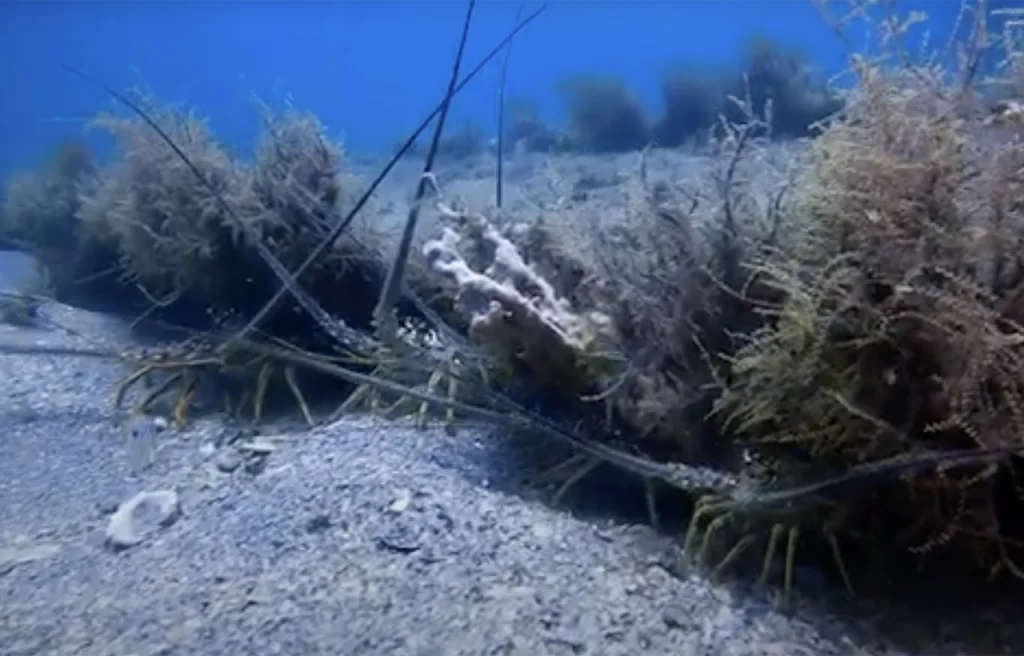
Maximizing Your Diving Experience at Blue Heron Bridge
Timing is Everything
- Dive during slack high tide, ideally 30-60 minutes before and after high tide
- Arrive early, especially on weekends (aim for 7 AM) to secure parking
Navigation and Safety
- Use a dive flag, which is required for all divers
- Stay within 50 feet of your dive flag
- Avoid the swim area (marked by red buoys) and boat channel
- Enter the water between the lifeguard station and the bridge
Dive Planning
- Plan for a 90-120 minute dive on one tank due to shallow depths
- Focus on specific areas rather than trying to cover the entire site in one dive
- Consider hiring a local guide for your first visit to learn the best spots
Techniques
- Practice good buoyancy control to avoid disturbing the sandy bottom
- Use frog kicks to minimize sediment disturbance
- Move slowly and carefully around structures and coral
Exploration Tips
- Check the east end of the snorkel trail and the sunken boat
- Explore the bridge pilings for diverse marine life
- Look for seahorses in the grass lines near the smaller bridge
- Search for octopuses and frogfish in the sandy areas
Photography
- Bring a macro lens for capturing small, unique creatures
- Be patient and thorough in your search for photo subjects
Additional Considerations
- Check local dive shops or online forums for current visibility conditions
- Be prepared for potential current changes, especially near the bridge ends
- Night dives are possible but require a permit
Capturing Memories at Blue Heron Bridge: Photography Tips
Preparation and Equipment
- Camera Gear: Bring a reliable underwater camera system, whether it’s a point-and-shoot or a DSLR. Consider using macro lenses for close-up shots of small marine life.
- Lighting Tools: Utilize strobes or video lights to enhance your images. Experiment with different strobe placements to see how they affect your photos. Snoots can help focus light on specific subjects for dramatic effects.
- Diopters: Use diopters (5x or 10x) to capture extremely close-up shots, revealing intricate details of small creatures like nudibranchs and seahorses.
Diving Techniques
- Buoyancy Control: Maintain good buoyancy to avoid disturbing the delicate marine environment. This skill is crucial when trying to get close to shy subjects like seahorses and frogfish.
- Slow Approach: Take your time when approaching subjects. Move slowly and patiently to avoid startling them, allowing for better compositions and more natural behavior in your shots.
- Explore Different Areas: Focus on various spots around the bridge, including pilings and artificial reefs, where diverse marine life congregates. Each area offers unique photographic opportunities.
Composition Tips
- Backgrounds: Aim for clean backgrounds by positioning your subject away from cluttered areas. Black backgrounds can be created using snoots or by positioning your subject in shadowy spots.
- Use Natural Light: When conditions allow, take advantage of natural light filtering through the water for ambient shots. This can create beautiful effects, especially during the last two hours before high tide when visibility improves significantly.
- Creative Angles: Experiment with different angles and perspectives. Shooting from below or at eye level with your subject can yield more engaging images.
Post-Dive Considerations
- Photo Review: Bring a laptop or tablet for reviewing and editing photos after diving. This allows you to assess your shots and learn from each dive experience.
- Workshops: Consider joining photography workshops focused on underwater photography at Blue Heron Bridge. These can provide hands-on instruction and valuable insights into improving your skills.
Frequently Asked Questions
When is the best time to dive Blue Heron Bridge?
Key Points for Timing
Slack Tide: The period around high tide when the water is still, typically lasts for about 5 to 15 minutes. Entering the water during this time provides the clearest conditions as it allows the incoming ocean water to replace the murkier water from the inlet.
Arrival Time: It’s recommended to arrive at Phil Foster Park at least 30 minutes before high tide to secure parking and prepare for your dive. The park can get crowded, especially on weekends.
Tide Schedule: Check local tide charts for specific times of high tide. Aim to be in the water by the time indicated for slack high tide to maximize visibility and minimize strong currents.
Additional Considerations
Night Dives: If you plan to dive at night, you must obtain a night dive pass and ensure you exit the park by 10 PM1.
Low Tide Conditions: Diving during low tide is possible but generally not recommended due to poor visibility and stronger currents.
What is the visibility like while diving Blue Heron Bridge?
Visibility at Blue Heron Bridge is highly variable, ranging from as low as 1 foot to as high as 50-60 feet, depending on several environmental factors:
Key Visibility Characteristics
Range: 1 to 30+ feet, with potential for up to 100 feet under perfect conditions
Best Conditions: Incoming tide brings clearest water from the Atlantic Ocean
Worst Conditions: Low tide and offshore weather can significantly reduce visibility
Factors Affecting Visibility
Recent rainfall
Port activity
Ocean weather conditions
Tidal flow
Number of divers in the area
Visibility Tips
Optimal Time: 30 minutes before and after high slack tide
Clarity Rule: Visibility typically reduces by half when the tide turns
Ocean Conditions: Clear offshore waters typically mean better visibility at the bridge
How deep are the dives at Blue Heron Bridge?
Diving at Blue Heron Bridge features varying depths, making it accessible for divers of all experience levels.
Depth Overview
General Depth Range: The depths at Blue Heron Bridge typically range from 5 to 21 feet.
Snorkel Trail: This area varies between 7 to 12 feet deep, depending on the specific location along the trail and the tide cycle.
East Side: The average depth here is around 15 feet, with the deepest point being a sunken sailboat that reaches up to 21 feet during normal high tide. During king tides, this depth can increase to 25 feet.
West Side: The maximum depth on this side can reach around 19 feet.
Is Blue Heron Bridge suitable for beginners?
Blue Heron Bridge is highly suitable for beginner divers for several reasons:
Shallow Depths
The site features shallow depths, typically ranging from 5 to 20 feet, with the deepest areas reaching just over 25 feet. This makes it an ideal environment for novice divers who are still gaining confidence in their skills.
Ease of Access
The dive site is easily accessible via a beach entry at Phil Foster Park, allowing beginners to enter the water without complicated setups. The proximity to the parking area also makes it convenient for divers to gear up and access the water quickly.
Rich Marine Life
Blue Heron Bridge is known for its abundant marine life, including colorful tropical fish, seahorses, and octopuses. This diversity provides an engaging experience for new divers, allowing them to practice their skills while enjoying the vibrant underwater ecosystem.
Ideal Conditions
The best time to dive is during high slack tide, which minimizes currents and enhances visibility. This timing is crucial for beginners as it ensures a safer diving experience with less chance of being swept away by strong currents.
Additional Support
Many dive shops offer guided tours specifically designed for beginners, providing instruction and support while exploring the site. This can help new divers feel more comfortable and confident in the water.
Is Blue Heron Bridge suitable for advanced divers?
Blue Heron Bridge is not just suitable for advanced divers, but it’s actually a highly attractive destination for experienced underwater photographers and marine life enthusiasts.
Advanced Diver Attractions
Macro Photography Paradise: The site offers incredible opportunities for advanced photographers to capture rare marine species
Unique Marine Life: Home to numerous rare and hard-to-find creatures, including:
Seahorses
Frogfish
Octopuses
Hundreds of nudibranch species
Advanced Diving Characteristics
Requires keen observation skills to spot camouflaged marine life
Demands excellent buoyancy control
Provides opportunities to find and photograph extremely rare marine creatures
Challenges divers to explore complex underwater environments
Specialized Training
Pura Vida Divers even offers a PADI Blue Heron Bridge Distinctive Specialty course, which indicates the site’s complexity and appeal to advanced divers. The course focuses on:
Advanced creature identification
Navigation skills
Fine-tuning diving techniques
Understanding local marine ecosystems
Palm Beach Diving Sites
- Blue Heron Bridge
- Breakers Reef
- Flower Gardens
- Juno Ledge
- King Neptune
- Northwest Double Ledges
- South Double Ledges
- Cable Crossing
- Breakers 3rd Window
- Rons Rock
- Ballentine Reef
- Worth Avenue Pier Debris
- Playpen or Playground
- Bath and Tennis
- North and South Turtle Mounds
- Shark Canyon
- Larsens Valley
- Hole in the Wall
Reference List
- (1) Phil Foster Memorial Park
- (2) Blue Heron Beach
- (3) Underwater Macro Life at the Blue Heron Bridge
- (4) New Reef Smart snorkel trail map installed under Blue Heron Bridge
- (5) Palm Beach County Celebrates Marine Life Protection Under Blue Heron Bridge
- (6) Big Trouble at Blue Heron Bridge

